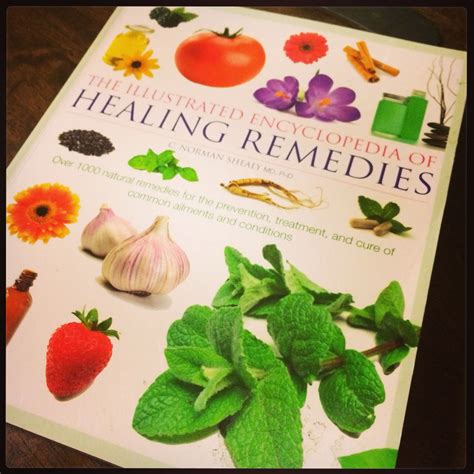Natural remedies have captured the public’s imagination for centuries. They promise a return to the simplicity and purity of nature, offering an alternative to synthetic drugs and modern pharmaceuticals. In this comprehensive exploration, we examine the history, science, benefits, risks, and future of natural remedies, addressing the question: Are they truly effective, or are their benefits largely a matter of belief?
In recent decades, there has been a surge in interest in natural remedies as more people seek alternatives to conventional medicine. This interest is fueled by concerns over the side effects of pharmaceuticals, a desire for more holistic approaches to health, and an increasing awareness of environmental sustainability. However, with rising popularity comes a host of questions. Can natural remedies really offer substantial benefits? What does science say about their effectiveness? Are these age-old treatments simply a placebo effect or do they hold tangible therapeutic value?
This article provides an in-depth discussion of natural remedies by exploring their historical roots, scientific evaluations, and practical applications. In doing so, it will shed light on both the potential and the pitfalls of relying on nature’s pharmacy.
Historical Background and Cultural Significance
Natural remedies are not a modern invention. They have been used by diverse cultures across the globe for thousands of years. From the herbal concoctions of ancient China to the indigenous healing practices of the Americas, natural remedies have formed the backbone of traditional medicine.
The Roots of Traditional Healing
Historically, early humans observed and learned from nature. They discovered that certain plants and natural substances could alleviate pain, treat infections, and promote overall well-being. This intuitive knowledge evolved into complex systems of medicine, such as:
- Traditional Chinese Medicine (TCM): Rooted in the balance of yin and yang, TCM uses herbal formulas, acupuncture, and dietary therapy.
- Ayurveda: Originating in India, Ayurveda emphasizes a holistic approach to health, integrating diet, herbal remedies, and lifestyle changes.
- Native American Medicine: Rich with plant lore and spiritual significance, Native American healing traditions harness natural remedies that are still revered today.
These historical practices have shaped our modern understanding of natural remedies and continue to influence current trends in alternative medicine.
Cultural Perceptions and Beliefs
For many communities, natural remedies are more than just treatments; they are a way of life. They embody a philosophy of living in harmony with nature and prioritizing balance in body, mind, and spirit. This cultural resonance is one of the reasons why natural remedies remain popular despite advances in modern medical science. They serve as a reminder of ancient wisdom and an alternative perspective on health that challenges the reductionist approach of modern pharmaceuticals.
Scientific Evaluation: Fact or Fiction?
When evaluating natural remedies, it is crucial to consider both anecdotal evidence and rigorous scientific research. The scientific community has increasingly studied various natural substances to understand their mechanisms, efficacy, and safety profiles.
Evidence from Clinical Research
Many natural remedies have undergone clinical trials to validate their therapeutic claims. For example, research on turmeric and its active compound, curcumin, has shown promising anti-inflammatory and antioxidant effects. Similarly, ginger has been studied for its potential to alleviate nausea and digestive issues.
However, while some studies support the use of these remedies, others yield inconclusive or mixed results. The variability in outcomes can be attributed to several factors:
A. Variations in Composition: Natural remedies often consist of complex mixtures of compounds, and the concentration of active ingredients can vary depending on the source and preparation method.
B. Placebo Effect: The psychological impact of believing in a treatment can sometimes produce positive outcomes, even if the remedy itself has no active therapeutic component.
C. Study Design: Some studies lack rigorous controls or are based on small sample sizes, which can skew the results and make it difficult to draw definitive conclusions.
The Role of the Placebo Effect
One of the most intriguing aspects of natural remedies is the placebo effect. Studies have shown that patients who believe in the efficacy of a treatment may experience real improvements in their symptoms. This effect highlights the complex interplay between mind and body and suggests that even if a remedy does not have a direct pharmacological effect, the act of taking it can produce measurable benefits.
Safety and Regulation
Another critical factor in evaluating natural remedies is safety. Unlike pharmaceuticals, which undergo extensive testing and regulation, natural remedies often enter the market with less oversight. This lack of regulation can sometimes result in products that are contaminated, mislabeled, or even dangerous. It is essential for consumers to approach natural remedies with the same caution they would any other treatment.
Common Natural Remedies and Their Uses
The variety of natural remedies is vast, ranging from herbal teas to essential oils and dietary supplements. Here, we explore some of the most commonly used natural remedies and their applications.
A. Herbal Teas
Herbal teas have been used for centuries to soothe a variety of ailments. For example:
A. Chamomile Tea: Known for its calming effects, chamomile tea is often used to alleviate anxiety and promote sleep.
B. Peppermint Tea: Often recommended for digestive issues, peppermint tea can help relieve symptoms of indigestion and nausea.
C. Ginger Tea: Widely used to reduce nausea, ginger tea is a popular remedy for motion sickness and morning sickness.
B. Essential Oils
Essential oils are concentrated extracts from plants that have therapeutic properties. They are used in aromatherapy and topical applications. Common essential oils include:
A. Lavender Oil: Often used for relaxation and stress relief, lavender oil can also help improve sleep quality.
B. Tea Tree Oil: Renowned for its antibacterial and antifungal properties, tea tree oil is frequently applied to treat skin conditions.
C. Eucalyptus Oil: With its decongestant properties, eucalyptus oil is a common remedy for respiratory issues.
C. Dietary Supplements
Natural supplements derived from plants, minerals, and other organic sources are used to support overall health. These include:
A. Vitamin C: Sourced naturally from fruits like oranges and berries, vitamin C is essential for immune support.
B. Omega-3 Fatty Acids: Found in fish oil and certain plant oils, omega-3s are known for their cardiovascular and anti-inflammatory benefits.
C. Probiotics: These beneficial bacteria, which can be sourced from fermented foods, help maintain a healthy gut flora.
D. Homeopathy and Alternative Therapies
Homeopathy, acupuncture, and other alternative therapies also fall under the umbrella of natural remedies. While some of these treatments have been embraced by mainstream medicine, others remain controversial due to a lack of scientific evidence.
Benefits and Drawbacks of Natural Remedies
A balanced approach to health requires understanding both the advantages and the potential risks of natural remedies.
Potential Benefits
- Holistic Health: Natural remedies often take a comprehensive approach to health, addressing physical, mental, and emotional well-being.
- Fewer Side Effects: In many cases, natural remedies have a lower risk of severe side effects compared to synthetic drugs.
- Accessibility: Many natural remedies are widely available and can be grown or prepared at home.
- Cultural Connection: Using natural remedies can foster a connection to cultural traditions and ancient wisdom.
- Sustainability: Often derived from renewable resources, natural remedies support environmentally sustainable practices.
Potential Drawbacks
- Inconsistent Quality: Variability in production methods can lead to differences in potency and effectiveness.
- Lack of Standardization: Without standardized dosages, it is challenging to determine the correct amount needed for therapeutic effects.
- Regulatory Concerns: The market for natural remedies is less regulated, increasing the risk of contamination or mislabeling.
- Limited Scientific Evidence: Not all natural remedies have been rigorously tested, leaving some claims unverified.
- Interactions with Medications: Natural remedies can sometimes interact with conventional medications, leading to adverse effects.

Integration with Modern Medicine
As natural remedies gain popularity, there is a growing trend toward integrative medicine—a holistic approach that combines conventional medical treatments with natural therapies.
Complementary Therapies
Many healthcare providers now acknowledge the value of complementary therapies in enhancing patient outcomes. These treatments can be used alongside conventional medicine to reduce symptoms, improve quality of life, and promote recovery. For example, patients undergoing chemotherapy may use ginger or peppermint tea to alleviate nausea, while those with chronic pain might benefit from acupuncture or herbal supplements.
Collaborative Approach
A collaborative approach between modern medicine and natural remedies can lead to better patient care. Healthcare practitioners can guide patients on safe and effective use of natural treatments while monitoring for potential interactions with prescribed medications. This integrative approach helps bridge the gap between ancient wisdom and contemporary science.
The Role of Digital Health
The rise of digital health platforms has also facilitated the integration of natural remedies into mainstream healthcare. Online communities, telemedicine, and health apps provide patients with access to information, support, and expert advice on using natural remedies effectively. These digital tools enable patients to make informed decisions and track the outcomes of their treatments over time.
Consumer Trends and Market Growth
The market for natural remedies is booming. With increased consumer interest in health and wellness, the global market for herbal supplements, essential oils, and organic products is growing at a rapid pace.
Factors Driving Growth
Several factors contribute to the increasing popularity of natural remedies:
A. Health Consciousness: As people become more aware of the potential side effects of synthetic medications, they turn to natural alternatives for preventive care.
B. Environmental Concerns: A growing emphasis on sustainability and organic living drives interest in natural products that are environmentally friendly.
C. Economic Factors: In some cases, natural remedies offer a more affordable alternative to expensive pharmaceuticals, making them an attractive option for budget-conscious consumers.
D. Cultural Revival: The resurgence of interest in traditional practices and ancient wisdom has also contributed to the popularity of natural remedies.
Impact of Social Media and Influencers
Social media platforms and wellness influencers have played a significant role in popularizing natural remedies. Influencers often share personal success stories, home remedy tips, and recipes for herbal teas and natural supplements, reaching a broad audience eager for alternative health solutions. This digital influence has not only boosted sales but also raised awareness about the potential benefits of integrating natural remedies into daily health routines.
Debunking Common Myths
With popularity comes a fair share of myths and misconceptions about natural remedies. Here, we debunk some of the most common myths to provide a clearer understanding of what natural remedies can—and cannot—do.
Myth 1: Natural Remedies Are Always Safe
Reality: While many natural remedies are generally safe, they are not without risks. Natural does not automatically mean harmless, and some remedies can interact with medications or cause allergic reactions. It is crucial to consult healthcare professionals before starting any new treatment.
Myth 2: Natural Remedies Can Replace Conventional Medicine
Reality: Natural remedies can complement conventional medicine, but they should not be seen as a complete replacement, especially for serious conditions. Integrative approaches that combine the best of both worlds are often the most effective.
Myth 3: More Natural Means More Effective
Reality: The effectiveness of a natural remedy depends on its active components, dosage, and preparation. Simply choosing a natural remedy over a synthetic drug does not guarantee superior results.
Myth 4: All Natural Remedies Are Scientifically Proven
Reality: While some natural remedies have robust scientific backing, many remain supported primarily by anecdotal evidence. Rigorous, peer-reviewed research is essential to establish their efficacy and safety.
Expert Opinions and Research Findings
Experts from various fields have weighed in on the topic of natural remedies. Many acknowledge that while these remedies may not be a panacea, they offer significant benefits when used appropriately.
Insights from the Medical Community
Doctors and researchers often emphasize the importance of evidence-based practice. They advocate for more research into natural remedies, noting that some of the most groundbreaking pharmaceutical drugs originated from natural sources. For instance, the discovery of aspirin from willow bark and digitalis from foxglove illustrates the potential of natural substances to lead to significant medical breakthroughs.
Perspectives from Alternative Medicine Practitioners
Practitioners of alternative medicine argue that natural remedies address the root cause of illness rather than merely alleviating symptoms. They stress the importance of a personalized approach to health, one that considers lifestyle, diet, and emotional well-being alongside the use of natural treatments.
Research Case Studies
Several case studies highlight the potential of natural remedies in clinical settings. For example:
A. Turmeric and Curcumin: Multiple studies have indicated that curcumin, the active component in turmeric, possesses anti-inflammatory properties that may benefit patients with arthritis and other inflammatory conditions.
B. Ginger for Nausea: Research has demonstrated that ginger can significantly reduce nausea and vomiting in patients undergoing chemotherapy or experiencing motion sickness.
C. Echinacea and Immunity: Some clinical trials suggest that echinacea may help reduce the duration and severity of common cold symptoms, although results have been mixed.

The Future of Natural Remedies
As the global health landscape evolves, so too does the potential for natural remedies. Innovations in technology, coupled with a deeper understanding of traditional practices, are paving the way for a new era of integrative medicine.
Advances in Research and Technology
Modern analytical techniques allow scientists to isolate, identify, and synthesize active compounds from natural sources with greater precision than ever before. This technological advancement promises not only to validate traditional remedies but also to develop new treatments based on natural compounds. Areas of promising research include:
A. Phytochemistry: The study of chemicals derived from plants is uncovering new compounds that may have therapeutic potential.
B. Nanotechnology: Innovative delivery systems, such as nano-encapsulation, are being explored to enhance the bioavailability and efficacy of natural remedies.
C. Genomics and Personalized Medicine: Advances in genomics offer the possibility of tailoring natural remedies to individual genetic profiles, thereby increasing their effectiveness and reducing adverse reactions.
Regulatory and Industry Developments
As consumer demand for natural remedies grows, regulatory bodies are working to establish clearer guidelines for their production and marketing. Improved regulation will help ensure product safety and quality, making it easier for consumers to make informed choices. Additionally, the natural health industry is experiencing significant investment and innovation, suggesting that the market for natural remedies will continue to expand in the coming years.
Integrative Healthcare Models
The future of healthcare is likely to be increasingly integrative, combining the strengths of both conventional and natural therapies. Hospitals, clinics, and wellness centers are beginning to adopt integrative models that emphasize patient-centered care and the simultaneous use of multiple treatment modalities. This evolution reflects a growing recognition that optimal health is achieved through a balanced approach that values both modern science and traditional wisdom.
Conclusion
The debate over whether natural remedies are fact or fiction is complex. Historical evidence and cultural traditions underscore their longstanding value, while modern scientific research reveals both potential benefits and significant limitations. What emerges is a nuanced picture: natural remedies are neither a miracle cure nor a complete hoax. They offer meaningful therapeutic benefits when used judiciously and in conjunction with conventional medicine, yet they must be approached with the same scrutiny as any other treatment.
For those seeking a more holistic approach to health, natural remedies can serve as valuable tools. However, it is essential to remain informed, consult healthcare professionals, and consider individual circumstances before embracing any treatment. Ultimately, the integration of natural remedies with modern medical practices holds promise for creating a more balanced, patient-centered approach to healthcare.
By recognizing the strengths and weaknesses of natural remedies, consumers and practitioners alike can make better decisions that promote overall well-being. As research continues and technology advances, the future of natural remedies looks increasingly promising—provided that both tradition and modern science work together in harmony.












